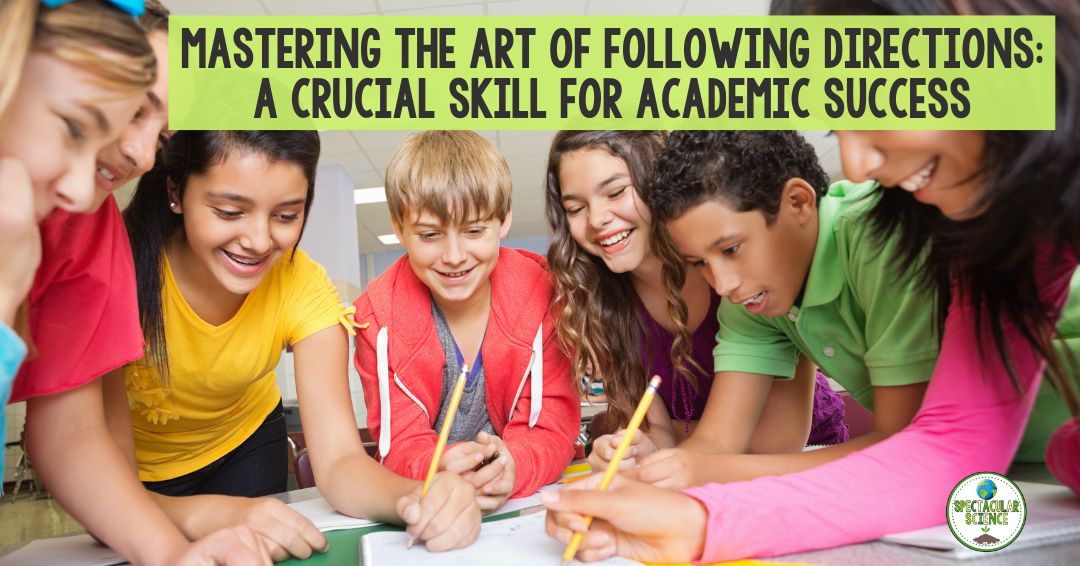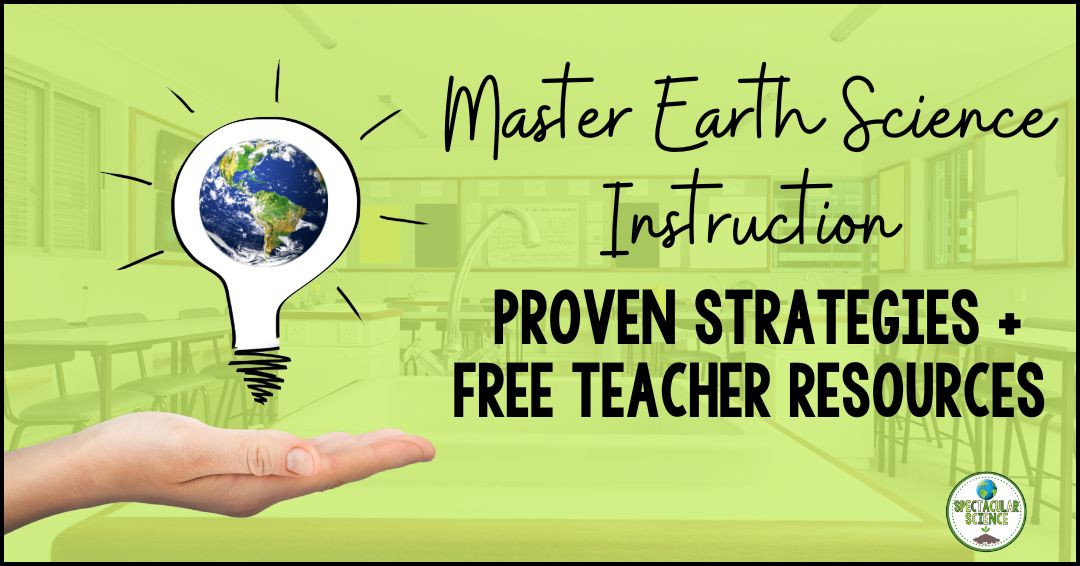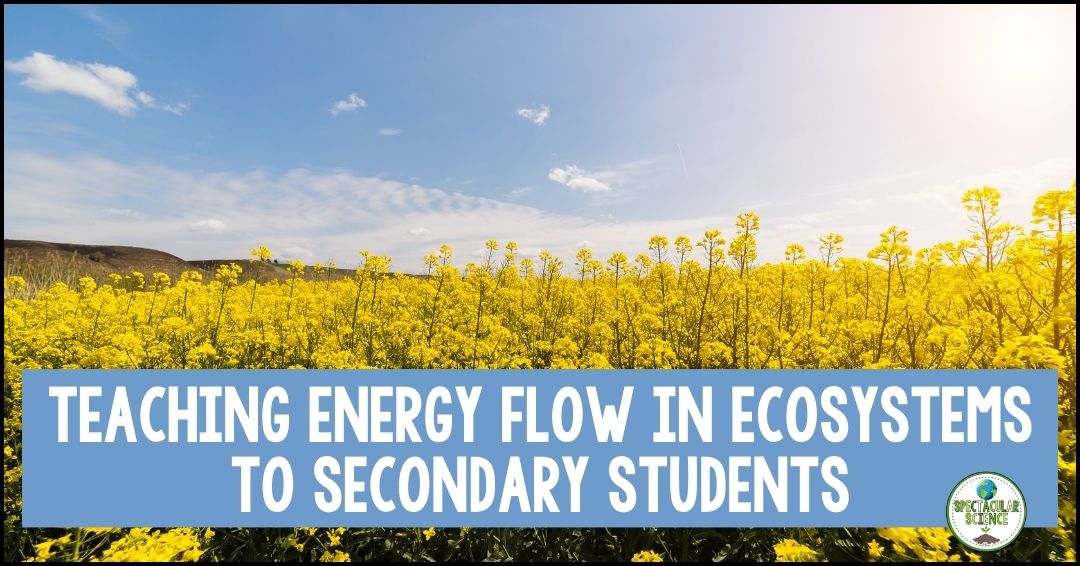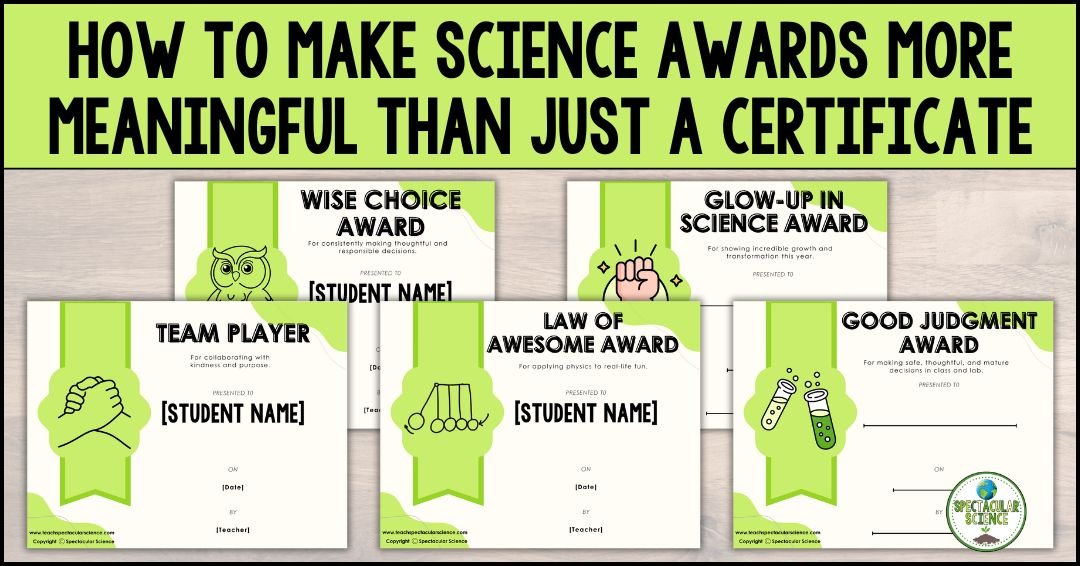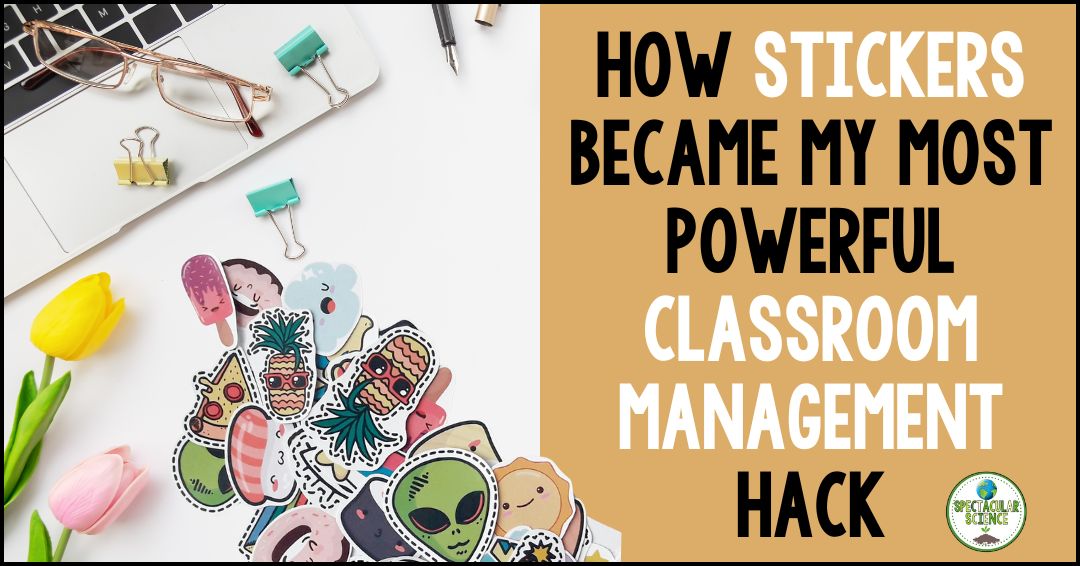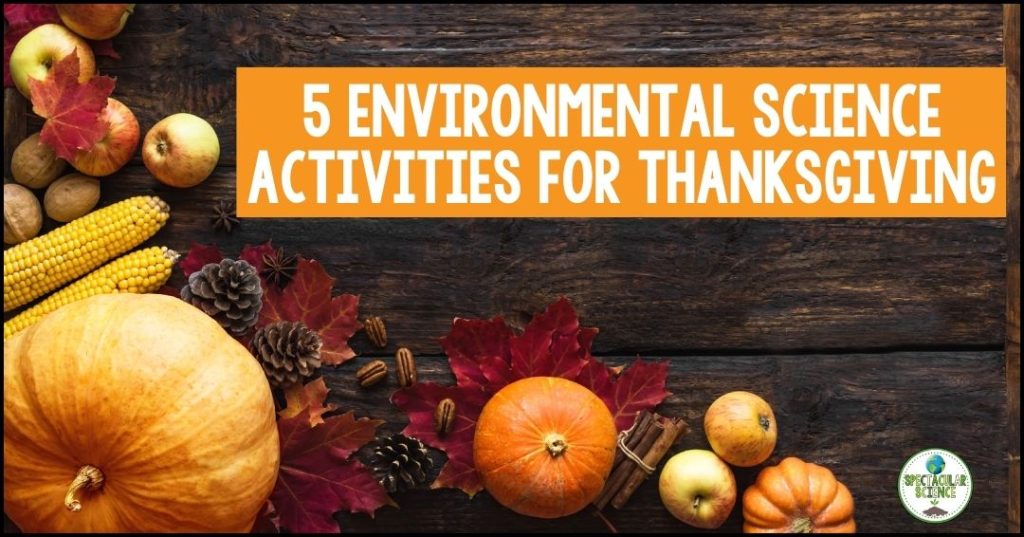
If you’re looking to combine real-world applications for learning in environmental science with some seasonal science activities for Thanksgiving, then keep reading!
Integrating environmental science concepts with Thanksgiving is a creative way to teach students about sustainability, conservation, and gratitude for the Earth’s resources.
Here are 5 environmental science activities for Thanksgiving that can be used to create a week-long unit that combines curriculum, seasonal elements, as well as real-world learning.

Mini-Unit: The Ecology of Thanksgiving Foods
With a focus on the ecology of Thanksgiving foods, students will have an overall learning objective to explore the environmental impact of traditional Thanksgiving foods and promote awareness of sustainable food choices.
You might decide to complete these activities throughout a single week or you can pick and choose what might work for you and your students as Thanksgiving approaches based on what time will allow.
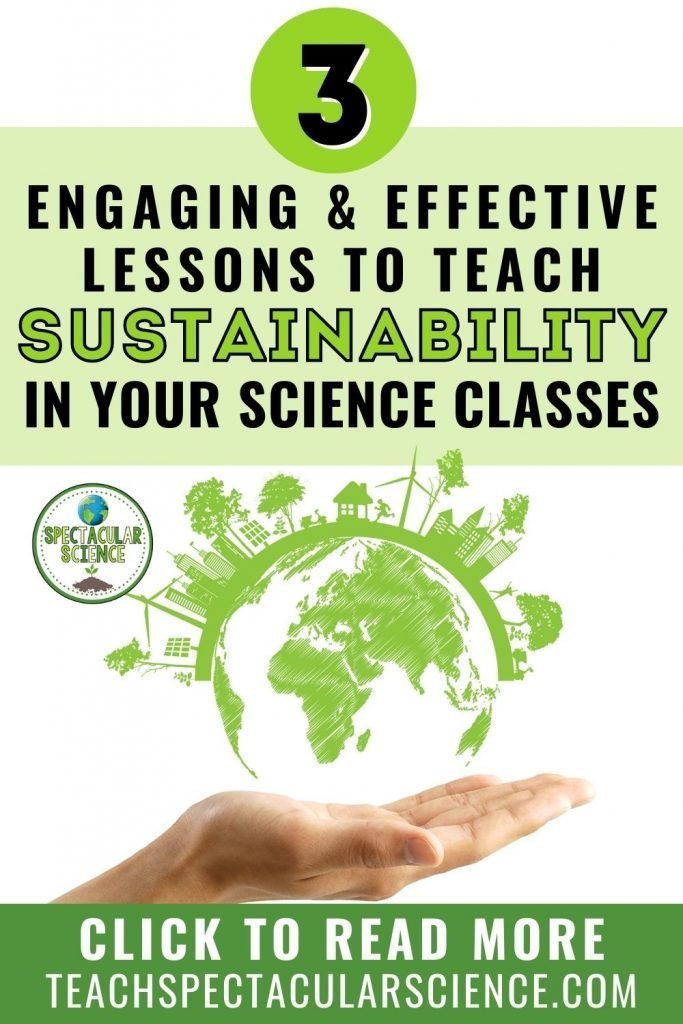
let’s get started
To begin, introduce the two separate topics of Thanksgiving foods and ecology. Explain the concept of the ecological footprint and its importance in understanding the impact of human activities on the environment. (Check out this post about sustainability and eco-footprints.) Then add the element of Thanksgiving by discussing some of the typical foods served during Thanksgiving along with their origins.
think about it
Get students to brainstorm a list of all of the foods they usually eat at Thanksgiving; this can be the foundation of the next part of the lesson. Check out some of my favorite essentials below, which are perfect for any individual or group brainstorming session.



research and analyze
In fact, make this even more inquiry-based and student-directed by assigning students different food products to research and analyze. Students can explore turkey, yams, potatoes, cranberries, etc. along with the ecological impact of producing each item (e.g., water usage, greenhouse gas emissions). There are lots of online resources students can read or watch, like this 5-minute PBS video about how cranberries are grown and harvested.
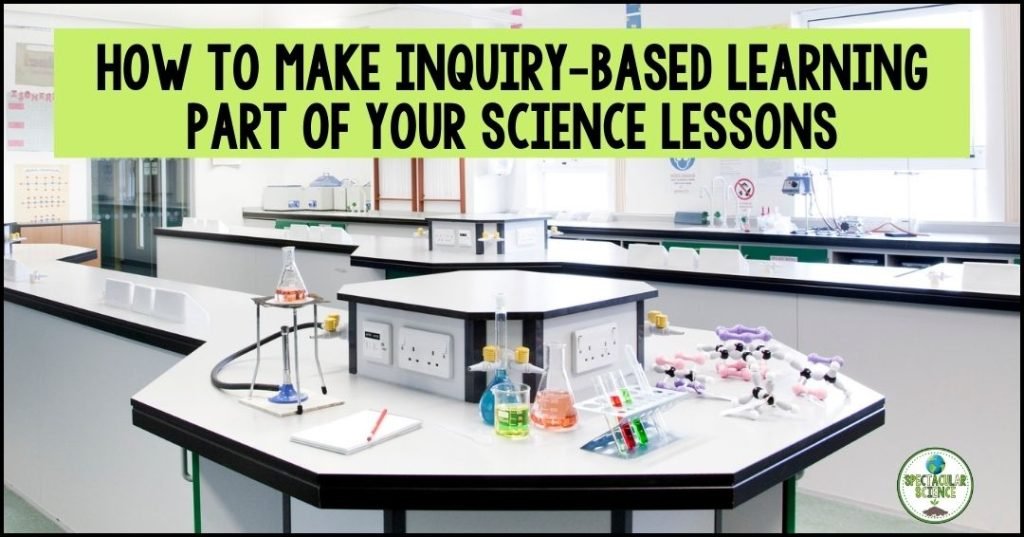
alternative solutions
Add a problem-solving element by challenging students to find alternatives or strategies to make each food choice more sustainable. (For more about using inquiry-based learning in science, check out this post.)
Grab the full assignment with a graphic organizer to make things no prep for you and ready-to-go for students. This no-prep Eco-Thanksgiving: A Sustainable Feast Activity is the perfect assignment to engage students in a meaningful exploration of Thanksgiving foods, their origins, and the critical role sustainability plays in our celebrations. Plus, there’s an answer key with sample student answers that can further support you with your students.
show and tell
Share these research findings by having students present their findings to their peers. Depending on time, you could do oral group presentations or create posters and have a gallery walk so students can see everyone’s work.
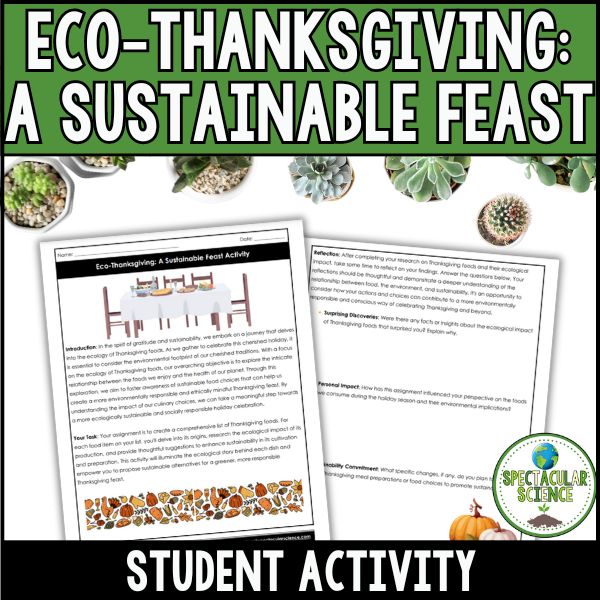
exit ticket
To ensure accountability, have students complete an exit card in the form of a 3-2-1 with 3 foods and their origins, 2 sustainability methods, 1 way they’ll take action.
With this newfound knowledge about a wide variety of foods, students can then become event planners by creating a Thanksgiving feast. Have students plan a hypothetical Thanksgiving feast with a focus on sustainability. Students could plan a menu with a variety of foods (and cooking methods) that applies their learning from their research. Encourage students to consider locally sourced foods, organic options, and minimizing waste.
tie it all together
The final component to this series of environmental science activities for Thanksgiving is to reflect and discuss. Some topics for discussion throughout these lessons can include:
- How individual food choices can contribute to environmental sustainability.
- The challenges and benefits of making sustainable food choices during Thanksgiving.
- How students can apply these principles to their own lives.
In order to increase participation and to encourage even the quiet students to contribute, provide time and space for individual responses. Ask students to jot their thoughts down on a sticky note (the smaller space is often less intimidating for students). After some time of personal reflection, open the floor to small or whole class discussion.

For these discussion points, I would provide three different sticky notes in variable colors in order to help sort their responses for review. No need to grade the responses but it’s a great way to assess knowledge and understanding and to support students’ learning. I love using lined sticky notes to help with handwriting and organization skills.
A BONUS ACTIVITY
Elevate your students’ Thanksgiving experience with an engaging turkey day adventure! This no-prep Thanksgiving Science Scavenger Hunt Activity combines the spirit of the holiday with hands-on science exploration.
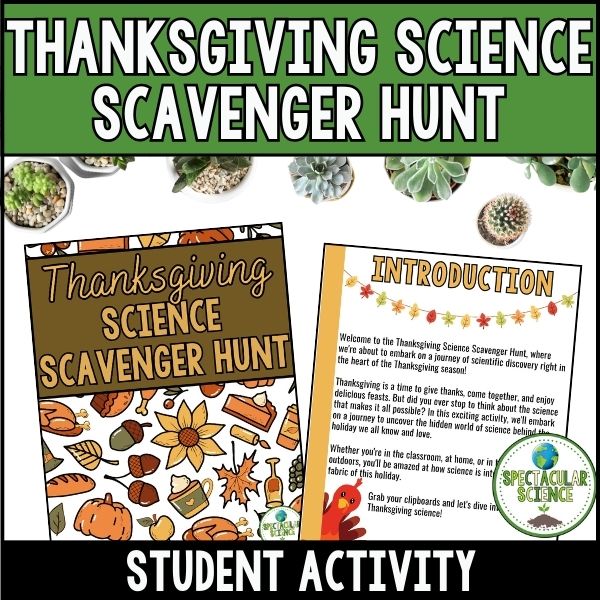
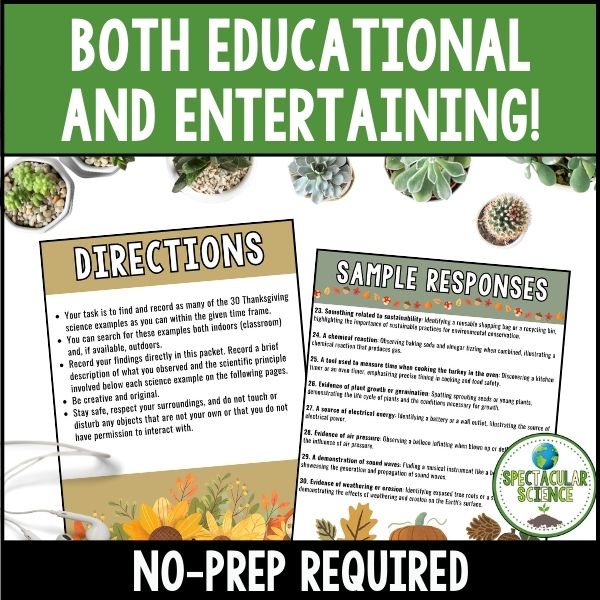
This activity invites students to get onto their feet, dive into the world of Thanksgiving science, and discover 30 scientific examples both inside a typical classroom and out in the outdoors. Your students will explore a wide array of scientific principles, including geology, physics, chemistry, biology, and environmental science.
Whether you’re seeking an educational and entertaining experience in the lead-up to Thanksgiving, a handy time filler, a captivating distance learning activity, or an option for early finishers, this Thanksgiving Science Scavenger Hunt is your go-to solution.
A Final Word on Science Activities for Thanksgiving
These activities are designed to work together but we all know time is of the essence, especially at this time of year. You can pick and choose what might work for you and your students.
The main thing is that by including environmental science activities for Thanksgiving, you can create engaging and meaningful lessons that promote awareness, gratitude, and responsible stewardship of the environment.
RELATED POSTS:
- HOW TO MAKE INQUIRY-BASED LEARNING PART OF YOUR SCIENCE LESSONS
- MAKE IT SPOOKY: SCIENCE LESSON PLANNING FOR SPOOKY SEASON
This post contains affiliate links for Amazon. As an Amazon Associate, I earn from qualifying purchases. By purchasing an item on the Amazon site using these links, I will receive a small commission on your purchase. This commission does not affect the price of your item.








